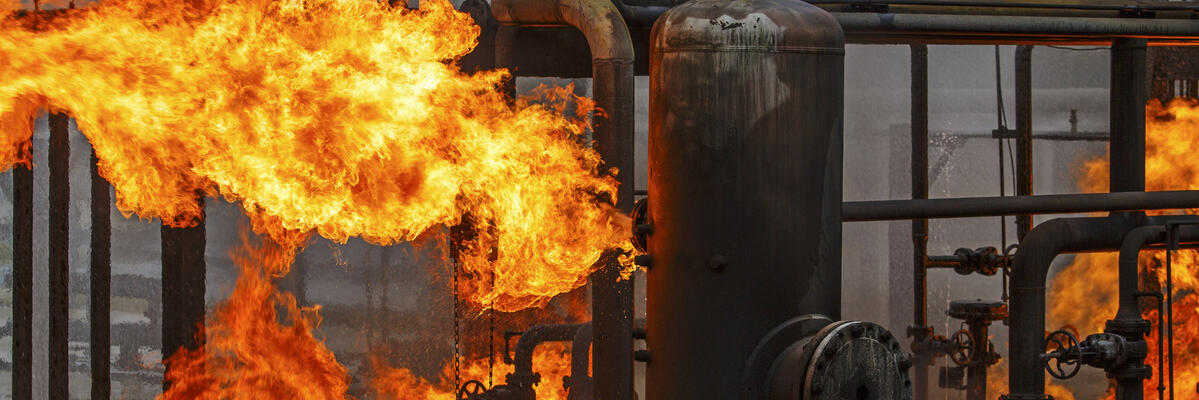New Data from the Coalition to Prevent Chemical Disasters Show 431 Chemical Releases or Explosions, Causing More than 82 Deaths and 1,600 Injuries Since April 2013
On the second anniversary of President Obama’s executive order to improve the safety of America’s chemical plants, the more than 100 members of the Coalition to Prevent Chemical Disasters issued the following statement:
Two years ago, on Aug. 1, 2013, President Obama issued Executive Order 13650, “Improving Chemical Facility Safety and Security.” The executive order directed several federal agencies, including the Environmental Protection Agency (EPA), to “enhance safety and security in chemical facilities by modernizing key policies, regulations, and standards…”
The executive order was prompted in part by the tragic fertilizer plant explosion on April 17, 2013, in West, Texas. The blast killed 15 people, injured over 200, and severely damaged surrounding neighborhoods, including three schools.
Despite that tragedy and other recent deadly chemical plant explosions, these facilities remain as dangerous today as they were two years ago.
In the two years since the executive order, there have been no concrete actions to protect our schools, workers, and communities from chemical disasters. The EPA, the Occupational Safety and Health Administration (OSHA), and the Department of Homeland Security (DHS) have not taken significant steps to require chemical companies to improve the safety of their facilities.
The chemical industry continues to lobby for voluntary, industry-written safety standards. But allowing the industry to police itself has proven disastrously ineffective. In the little more than two years since the devastating explosion in West, Texas, there have been at least 431 chemical releases or explosions, causing more than 82 deaths and 1,600 injuries.
The magnitude of the danger is striking. Over 100 million Americans live in areas at risk of a chemical disaster from at least one dangerous chemical facility. At least one-third of all U.S. schoolchildren attend a school inside chemical disaster “vulnerability zones.” Workers in these facilities live with the risk of injury or death every day. Furthermore, communities of color and low-income communities bear a disproportionate risk of harm from chemical disasters. Recent analysis of 3,433 hazardous chemical facilities found that the percentage of Blacks living in “fenceline” zones nearest to the facilities was 75% greater than for the U.S. as a whole, and the percentage of Latinos in these zones was 60% greater.
President Obama has an historic opportunity to safeguard the communities and workers threatened by dangerous chemical plants, but chemical industry lobbying and administrative agency delays are allowing his legacy to slip away. His EPA has authority under the Clean Air Act to issue new rules with a commonsense requirement that chemical facilities switch to safer chemicals and technology where feasible. Such a requirement would greatly reduce — and in many cases completely eliminate — the risk from dangerous chemical facilities. It would also be consistent with the Obama administration’s stated principles and his leadership during his time as a Senator, when he warned against industry lobbying hijacking our safety and security.
The EPA claims it is moving forward to propose new rules this September, but to ensure strong protections for the millions of Americans at risk of chemical disasters, the rule must include mandatory safety requirements, and it must be finalized 60 legislative days before President Obama leaves office to prevent reversal by a new Congress in 2017.
For more than four years, our coalition, made up of over 100 environmental justice, labor, public health, national security, and environmental organizations, has called on President Obama and the EPA to implement these critical, life-saving reforms. The administration must act, and act now.
Contact:
Brian Gumm, Center for Effective Government
(202) 683-4812
bgumm@foreffectivegov.org
Rick Hind, Greenpeace
(202) 413-8513
rhind@greenpeace.org
Carli Jensen, U.S. Public Interest Research Group
(206) 766-0510
cjensen@pirg.org
Eric N. Whalen, Coming Clean
(971) 998-8786
ericwhalen@comingcleaninc.org
Richard Moore, Los Jardines Institute
505-301-0276
ljinewmexico@gmail.com
Michele L. Roberts, national co-coordinator
Environmental Justice and Health Alliance for Chemical Policy Reform
202-704-7593
mroberts@comingcleaninc.org
Coalition to Prevent Chemical Disasters:
Links
Executive Order: https://www.whitehouse.gov/the-press-office/2013/08/01/executive-order-improving-chemical-facility-safety-and-security
Working Group Report to the President: https://www.osha.gov/chemicalexecutiveorder/final_chemical_eo_status_report.pdf
Center for Effective Government, Kids in Danger Zones, September 2014, http://www.foreffectivegov.org/kids-in-danger-zones
Environmental Justice and Health Alliance for Chemical Policy Reform, Who’s in Danger? Race, Poverty, and Chemical Disasters, May 2014, http://comingcleaninc.org/whats-new/whos-in-danger-report
Coalition to Prevent Chemical Disasters, Chemical Incident Data, http://preventchemicaldisasters.org/resources/chemical-incident-data-2/

